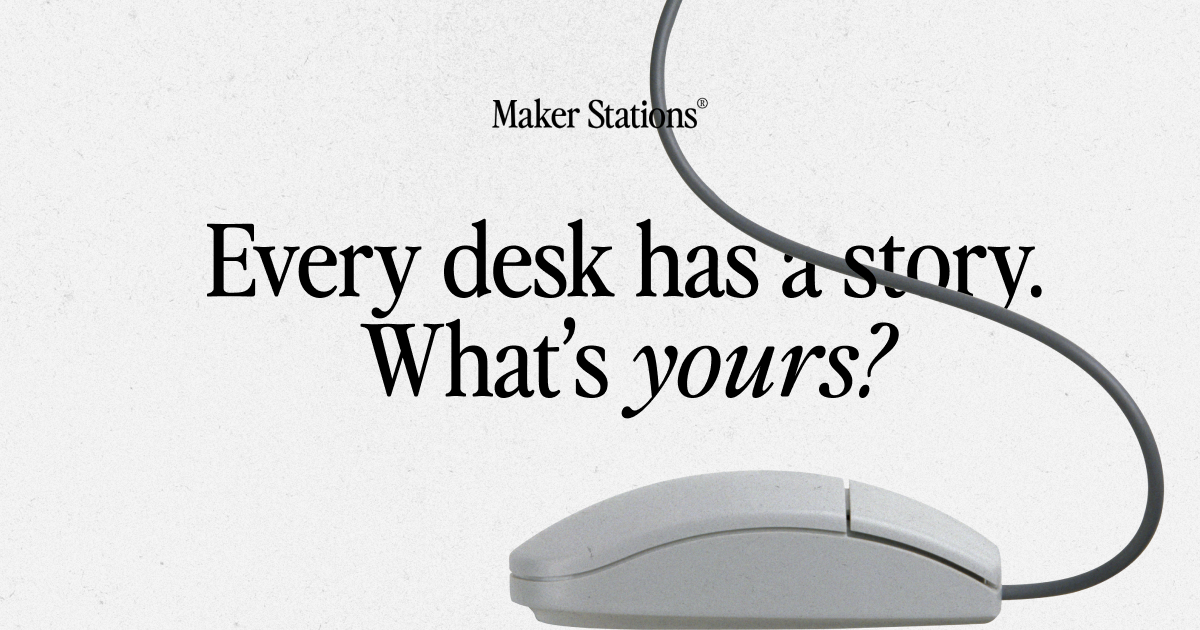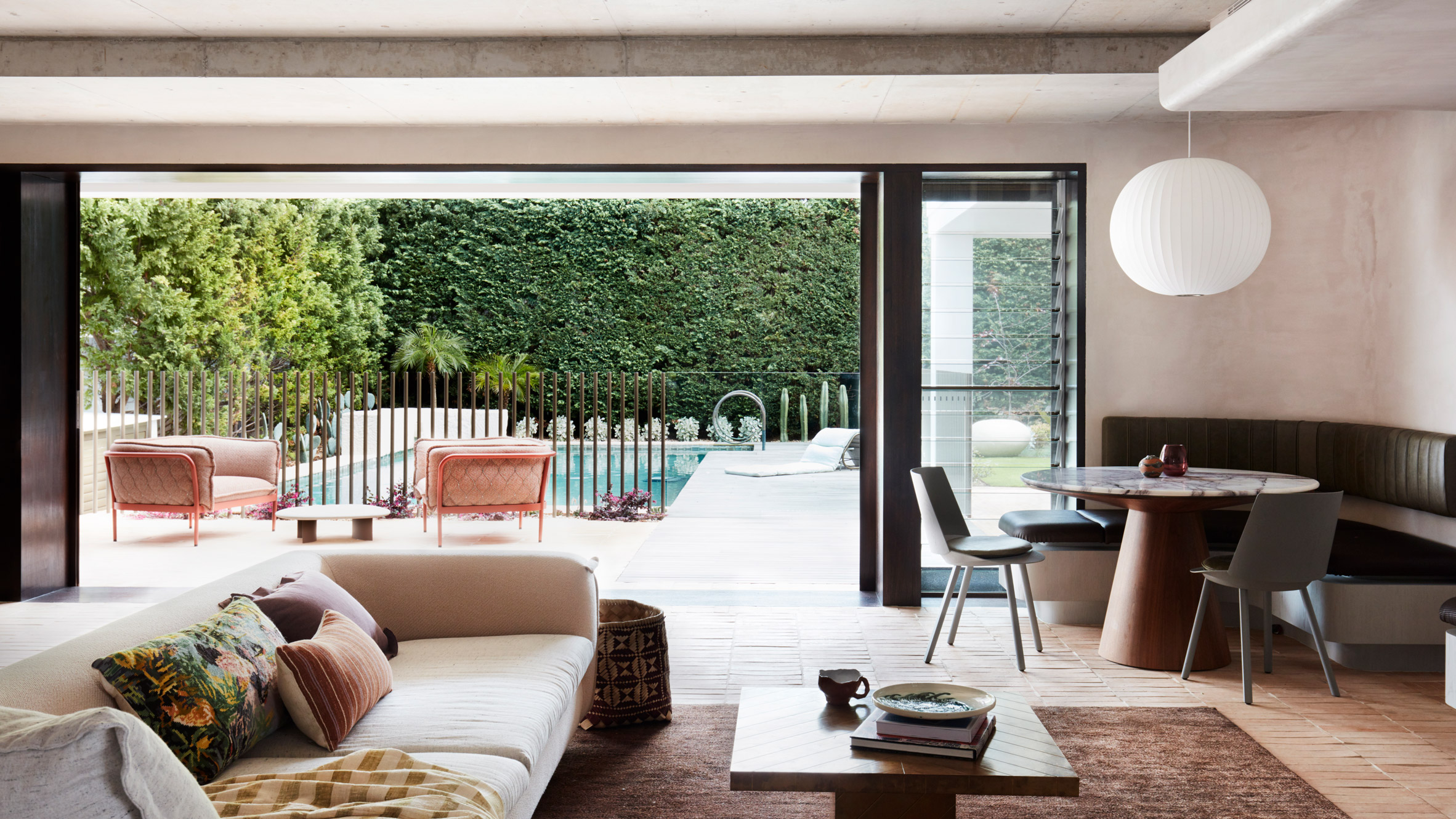- Links for Thinks
- Posts
- 🔗 🧠 Links for Thinks #5
🔗 🧠 Links for Thinks #5
Design Inspiration through the lens of Workspaces, Architecture, Interior Design, Art History, & Nature

Five resources every week with actionable takeaways to make you a better designer.
As we gear up for holiday food comas, thankful for our time away from screens—I've been thinking about how much of my best thinking happens away from the keyboard. (Sweet, sweet irony.)
Last week we looked at research through the lens of atomic design—so this week, let's apply that same atomic thinking to everything from your desk setup to city spaces to timeless masterpieces. Think of it as component-based design, just with more concrete and less Figma anxiety.
Turns out some of the best digital inspiration can come from decidedly analog places. While we're busy perfecting hover states, the physical world’s been quietly mastering user experience for centuries.
Take a peek at these links—they might just change how you see the world. (But right after you peek, get outside.)
— Jake
TODAY'S EDITION

THE ANATOMY OF A WORKSPACE
If you’re reading this newsletter, I'd be willing to bet you spend a fair amount of time at a desk. Whether you're a home office hermit, coffee shop nomad, or just got called back into an open office plan wondering who tf thought it was a good idea—when's the last time you actually audited your space?
THE JUICE
Your Space as a Design System:
Design your space like you'd build a component library—every zone should have a clear purpose
Create distinct areas for different brain modes—deep work, quick tasks, your favorite hobbies, staring at a wall filling with existential dread
Small changes create big habits (putting your phone in another room isn't avoidance, it's flow architecture)
The Roommate Agreement: Your brain and your space are basically roommates—and like any shared living situation, it's all about boundaries. When your space is chaos, your brain's that passive-aggressive roomie leaving post-it notes everywhere about their "concerns."
Design for Reality: The best workspace isn't the one with the fanciest standing desk you'll never use—it's the one that actually matches how you work. Build a system you'll stick with, not one for your imaginary productive self.

USABILITY BEFORE IT WAS COOL
While we're all obsessing over whether or not to round our corners, there's an entire world of physical interfaces that have been testing these same patterns for way longer than we have. That restaurant that just feels right? The store layout that guides you exactly where you need to go? That's not accident—that's interface design minus the hover states. Because you’ll only find those on a screen.
THE JUICE
IRL Patterns Worth Stealing:
Desire paths are just organic usability tests (turns out humans knew about user flows before we had flowcharts)
Context switching didn't start with browser tabs—study how spaces transition between areas
Lighting creates hierarchy better than your drop shadows ever will
The Silent Guide: Physical spaces are the ultimate invisible interface. Good interior design guides without signage, delights without popups, and onboards without tutorials. If you need in depth documentation, you might be doing it wrong.
Research in 3D: Every retail space is a UX case study in disguise:
Museums are master classes in information architecture
Hotels are experiments in universal design
Restaurants are labs for environmental psychology

THINKING IN SYSTEMS
While we're fussing over 8px vs 12px spacing, architects have been solving human problems on much larger scales for centuries. And they can't just push a hotfix when something goes wrong. Architecture isn't just about making big beautiful buildings—it's about creating systems that actually work for humans.
THE JUICE
Space Psychology: Good architecture shapes behavior without saying a word. No tooltips, no onboarding flow—just intuitive design that guides you exactly where you need to go. Study the buildings that don't need "You are here" maps.
The Form/Function Tango: Architecture is a delicate dance between vision and reality. You can't hide bad decisions behind a modal. That stunning design choice either works or it doesn't—and the consequences are a bit more serious than a dip in conversion rates. Turns out rule-breaking hits different when the rules involve gravity.
Context is King: A perfect solution in one space can fail spectacularly in another. What works for a cozy café would be chaos in an airport terminal. Good architects don't just design spaces—they design for specific humans in specific situations.

NOTHING IS NEW (AND THAT'S OKAY)
Before you dive into your next "revolutionary" design, take a quick trip to the past. Everything we think is innovative today probably has a cooler grandparent in a museum somewhere. And that's not a bad thing—it turns out studying art history isn't just for impressing people at parties (spoiler: no one will be impressed). It's about understanding what worked, what didn't, and why. That way, when you're "borrowing" ideas, at least you're borrowing good ones.
THE JUICE
Art History's Greatest Hits: The design principles you swear by? They've been tested by centuries of artists. From grid systems that predate computers to color theories older than electricity, we're all standing on the shoulders of very stylish giants.
Everything is a Remix: That mind-blowing interface pattern you saw on Dribbble? Probably started life as a 1920s theater poster. Your revolutionary layout? A Bauhaus student definitely sketched it on a napkin. Great designers don't just copy the past—they understand why it worked.

NATURE THE OG DESIGN SYSTEM
When you’re tired of what humans have to offer, maybe it's time to go touch grass. Nature's been quietly (sometimes not so quietly) running the most successful design system ever created. No A/B tests needed when you've got 4.5 billion years of iterations backing your color choices.
THE JUICE
Evolution of Style:
Find color combinations that survived natural selection
Patterns that don't need drop shadows to create depth
Beyond Surface Level: Natural interfaces feel "right" because they've been user tested by literal survival. That's not randomness you're seeing—it's iterations you can count in millennia.
Copying Nature's Homework: It's called biomimicry—the art of solving human problems by studying nature's solutions. When Velcro copied burrs or bullet trains borrowed kingfisher beaks, they weren't just finding inspiration—they were tapping into billions of years of R&D.
THANKS FOR READING—SEE YOU NEXT MONDAY
In the meantime, feel free to:
Forward this email or share this link with your friends if you feel they need some links for thinks: https://www.linksforthinks.com/subscribe
Reach out with any suggestions or questions for the newsletter.
Send me some of your favorite links and takeaways.
Cheers, Jake



